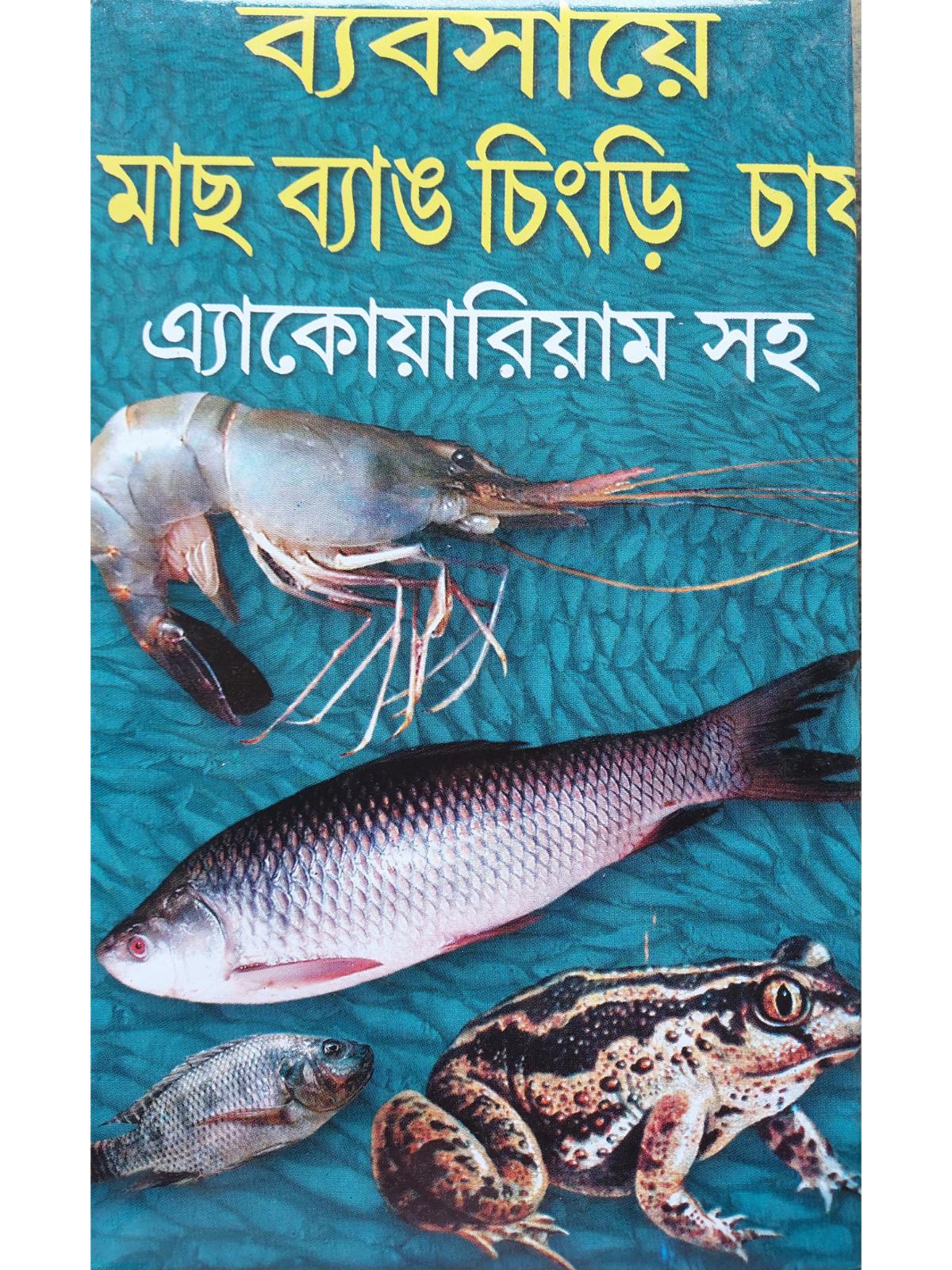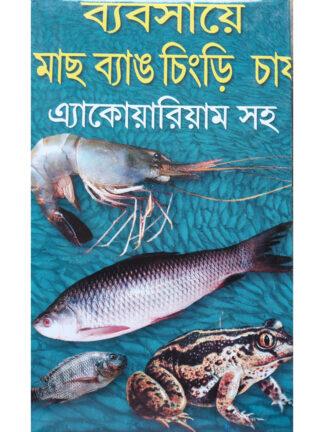Description
Buy Babsaye Mach Bang Chingri Chas Book written by Dr Dhananjay Das and published by Kamini Prakashalay. Get a huge number of Book written by Dr Dhananjay Das from our online book shop.
We have a tremendous collection of Books written by Dr Dhananjay Das. Kamini Prakashalay is a popular name in publication world. Almost all books published by Kamini Prakashalay are available in our online store.
Babsaye Mach Bang Chingri Chas is one of the bestselling books. If you are searching Babsaye Mach Bang Chingri Chas then you are at right place. You can buy Babsaye Mach Bang Chingri Chas at an affordable price.
Prawn Cultivation Guidelines
Prawn cultivation, also known as shrimp farming, can be a rewarding venture if done correctly. Here are some general guidelines to help you with prawn cultivation:
- Select a suitable site: Choose a location with access to a clean and reliable water source, preferably near the coast or brackish water areas. Ensure that the water quality is suitable for prawn cultivation, with adequate salinity and oxygen levels.
- Prawn species selection: Determine the prawn species you want to cultivate based on the market demand, environmental suitability, and availability of seedstock. Common species for cultivation include black tiger prawn (Penaeus monodon) and whiteleg shrimp (Litopenaeus vannamei).
- Pond construction: Prepare the cultivation area by constructing ponds or raceways. The size and design of the pond depend on the scale of your operation. Ensure proper water exchange, drainage, and water depth to maintain optimal conditions for prawns.
- Water quality management: Monitor and maintain water quality parameters such as temperature, salinity, pH, dissolved oxygen, and ammonia levels. Regularly test the water and take appropriate actions to ensure suitable conditions for prawn growth and survival.
- Seedstock selection and stocking: Obtain high-quality prawn seedstock from reliable hatcheries. Consider the health, size, and genetic quality of the seedstock. Stock the prawns in the pond at an appropriate density, considering factors such as water quality, pond size, and species requirements.
- Feeding and nutrition: Feed the prawns a balanced and nutritionally complete diet to support their growth. Use commercial prawn feed formulated for the specific species and life stages of the prawns. Adjust feeding rates based on their growth, water quality, and environmental conditions.
- Water management: Maintain proper water levels in the pond and ensure good circulation and aeration to promote prawn health and growth. Monitor water temperature, salinity, and oxygen levels regularly and take corrective measures if necessary.
- Disease management: Implement biosecurity measures to prevent the introduction and spread of diseases. Quarantine new stock before introducing them to the pond, monitor the prawns for signs of diseases, and promptly seek veterinary advice if any issues arise. Follow proper sanitation practices and maintain good pond hygiene.
- Harvesting and processing: Monitor the growth of the prawns and determine the optimal harvest size based on market preferences. Use suitable harvesting methods, such as draining the pond or using nets, to collect the prawns. Process and package the harvested prawns appropriately to maintain their quality.
- Marketing and sales: Develop a marketing strategy to sell your prawns. Establish connections with local markets, seafood distributors, restaurants, or individual customers. Consider factors such as pricing, packaging, and transportation to ensure a successful sale.
It’s essential to conduct thorough research, seek guidance from experienced farmers or aquaculture experts, and follow local regulations and guidelines specific to prawn cultivation in your region. Proper management, attention to water quality, and disease prevention are crucial for successful prawn cultivation.
What is Frog Farming?
Frog farming, also known as frog cultivation or frog farming, is the practice of raising frogs for various purposes, including food consumption, scientific research, and the pet trade. Frog farming can be done in both small-scale and large-scale operations, depending on the specific objectives and market demands.
Here are some key points about frog farming:
- Food consumption: In many cultures, frogs are considered a delicacy and are consumed as food. Frog legs, in particular, are a popular culinary item in various cuisines around the world. Frog farming for food production involves raising frogs in controlled environments and managing their growth, nutrition, and overall health until they reach a suitable size for harvest.
- Species selection: Different frog species are used for farming depending on regional preferences, availability, and market demand. Commonly farmed frog species include the American bullfrog, European edible frog, Asian painted frog, and Chinese bullfrog, among others.
- Habitat and facilities: Frog farms typically require suitable habitat or facilities to accommodate the specific needs of the frogs. This may include ponds, tanks, or enclosures that provide appropriate water quality, temperature, humidity, and shelter for the frogs to thrive.
- Feeding and nutrition: Proper nutrition is essential for the healthy growth of farmed frogs. Frog feed is typically a combination of commercially produced feeds, including pellets, insects, small fish, and in some cases, other frogs. The diet and feeding regime vary depending on the species and growth stage of the frogs.
- Disease management: Like any animal farming operation, frog farms need to implement disease management strategies to prevent and control the spread of diseases. This may include proper sanitation practices, regular health monitoring, quarantine protocols for incoming frogs, and appropriate veterinary care.
- Harvesting and processing: When the frogs reach the desired size and age for their intended purpose, they are harvested. For frog farming aimed at food consumption, the frogs are typically processed by removing the hind legs, which are the most sought-after part. The legs are then packaged and distributed to markets or restaurants.
- Sustainability and conservation: Responsible frog farming practices prioritize sustainability and conservation efforts. It’s important to ensure that the farming activities do not negatively impact wild frog populations or their natural habitats. Adhering to regulations and guidelines regarding species selection, farming methods, and environmental stewardship helps maintain the ecological balance and protect biodiversity.
- Research and education: Frog farming also plays a role in scientific research, education, and conservation efforts. Farms may collaborate with researchers, educational institutions, and conservation organizations to study frog behavior, reproduction, and habitat restoration.
Frog farming can provide economic opportunities, contribute to food security, and reduce pressure on wild frog populations. However, it’s crucial to adhere to ethical and sustainable practices to ensure the welfare of the farmed frogs and minimize environmental impacts. Local regulations and guidelines should be followed when engaging in frog farming activities.




















